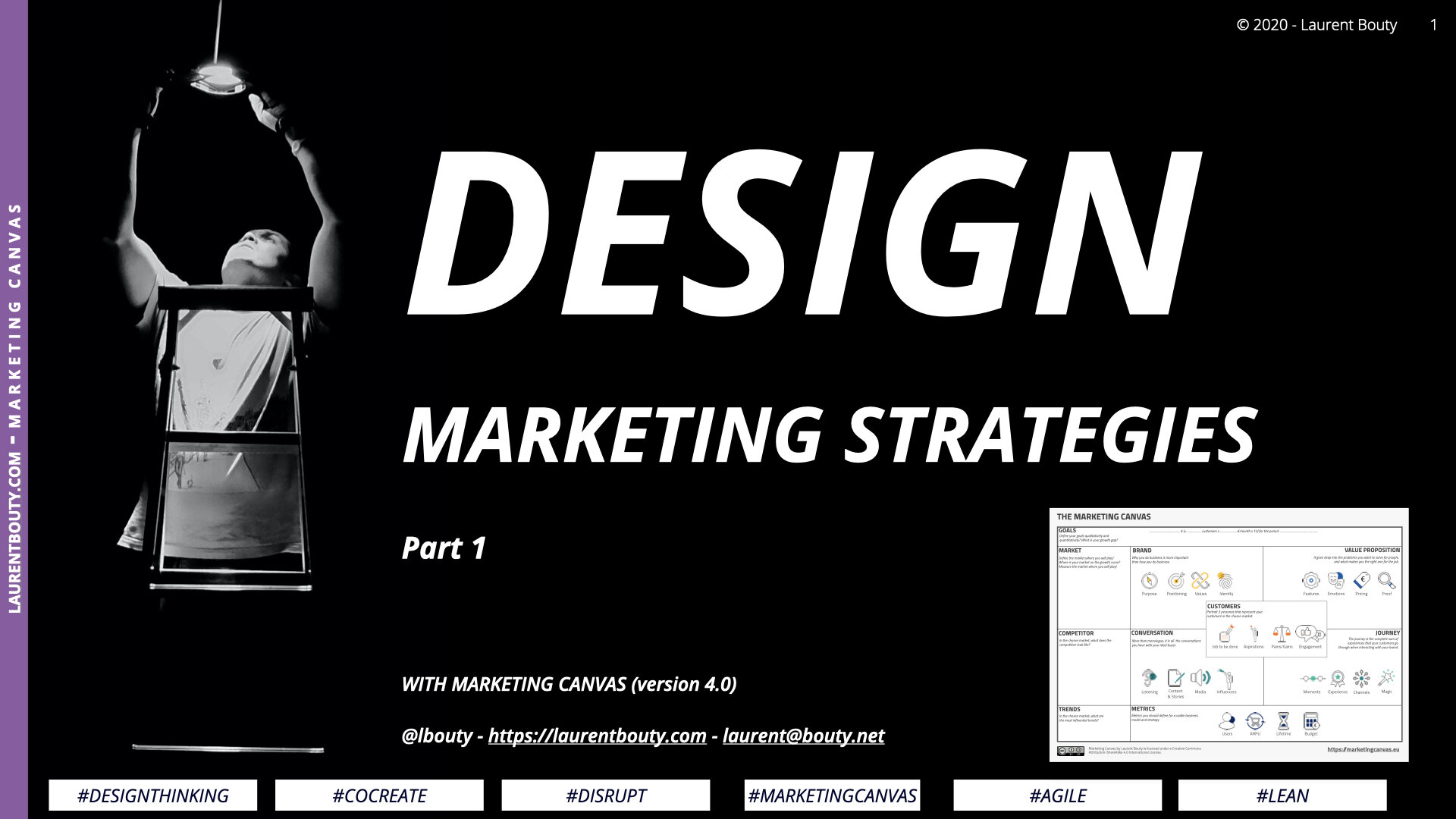Last update: 15/06/2023
In a nutshell
In our ever-evolving digital landscape, creating a memorable and unique customer experience is paramount. This article delves into the realm of 'Magic' in marketing, a concept that encourages the creation of extraordinary events throughout the customer journey. Drawing inspiration from industry-leading tools, we discuss how to inject Magic into every customer interaction. We further illuminate the role of sensory engagement and personalization, breaking down their importance in nurturing a remarkable customer journey. Unpack the significance of 'Moments of Truth', those crucial points that shape a customer's relationship with your brand. Furthermore, we explore effective evaluation techniques to ensure your strategies truly work their magic. Incorporating examples, actionable tips, and deep-dives into each concept, this article seeks to empower businesses to create enchanting customer experiences that drive loyalty and growth.
In the Marketing Canvas
The Marketing Canvas is a powerful tool for entrepreneurs and non-marketers to build a robust marketing strategy. It consists of six meta-dimensions, each with four sub-dimensions, for a total of 24 sub-dimensions defining your Marketing Strategy. One of these sub-dimensions is MAGIC, which falls under the JOURNEY meta-category
Defining Magic
In the Marketing Canvas, Magic represents an infusion of extraordinary elements during the Customer Journey that uplift and strengthen your brand purpose. It is not merely an exercise of flamboyance but should seamlessly align with the understanding of your customer across the four dimensions as detailed in the Customer category.
Take inspiration from the work of Watkinson for introducing magic in the customer experience. Beyond the Brilliant Basics, the emphasis is on simplifying and streamlining the customer experience - what can be removed, yet enhance the experience? Consider Vodafone's Red Box service - a perfect example of creating an effortless customer experience by transferring all contacts from your old phone to your new one.
Creating stress-free experiences often leads to better experiences. Imagine your airline reminding you to pack your mobile charger or informing you about the weather at your destination. Small gestures like these can significantly enhance the service.
To elevate the customer experience, try engaging all the senses - vision, touch, scent, hearing, and taste. Starbucks' brand association with soothing music provides a brilliant example of sensory engagement.
Remember, your staff should be personable and socially engaging, empower your customer by giving them control over product choices, delivery options, customization, and price point. A product or service is not just a transactional entity but an emotional one too. It is this emotional connection that often becomes a critical determinant of its success.
The goal is to create such extraordinary experiences at certain moments that customers not only remember but also share with friends. This concept is known as Moments of Truth.
Here's a breakdown:
Zero Moment of Truth: Coined by Google, this moment occurs when prospects acknowledge a need and seek online information for a potential purchase. The term purchase is all-encompassing and applies to acquiring a wide range of goods and services, including face-to-face meetings like interviews and dates.
First Moment of Truth: Coined by P&G, it represents the decisive moment when customers are faced with the product and its alternatives in real life. It is at this point that the decision to buy a specific brand or product is made.
Second Moment of Truth: Also Coined by P&G, this moment happens after the purchase. It's when the customer starts using your product or brand. The resulting experience should reinforce your pre-purchase promises, helping to build a relationship with your audience.
Third Moment of Truth: Coined by Pete Blackshaw, this moment happens post-product use. It's when your customer becomes a brand advocate, contributing word-of-mouth advertising, ratings, and reviews. At this point, the customer becomes a walking endorsement for your business.
Ultimate Moment of Truth: Coined by Brian Solis, this represents the instance when a customer creates content based on their experience with your product or service and shares it with their network. This user-generated content then becomes a resource for potential customers at their Zero Moment of Truth.
Tools for Magic
Various tools can be used to create Magic in the customer journey. Storytelling is one such powerful tool. By crafting engaging and emotionally resonant stories around your product or service, you can captivate your audience and make your brand more memorable.
Customer analytics is another tool. By analyzing customer data, you can better understand your customers' needs and behaviors, enabling you to personalize their experiences and create moments of magic that feel uniquely tailored to them.
Similarly, you can use technology to enhance the customer experience. For example, Augmented Reality (AR) and Virtual Reality (VR) can provide immersive, unforgettable experiences that can wow your customers and make your brand stand out.
Translating Magic into Action
Translating Magic into action begins by deeply understanding your customer journey and identifying opportunities to introduce extraordinary elements that will delight and impress. Remember, these magic moments should always be authentic and align with your brand purpose.
Next, define clear objectives for each moment of magic. Whether it's to drive customer engagement, increase customer loyalty, or promote word-of-mouth marketing, having clear goals will guide your strategies and help you measure success.
Also, ensure you have the necessary resources and capabilities to deliver these moments of magic consistently. Training your staff, investing in the right technology, and regularly monitoring and adjusting your strategies can all help in this regard.
Evaluation and Improvement
Is Magic of your user journey helping you achieve your goals?
Evaluate your Magic efforts based on the following metrics. Rate your agreement with the statements on a scale from -3 (completely disagree) to +3 (completely agree):
You have identified obstacles across your customer journey and have reduced it where customers are expending undue energy.
You have eliminated confusion, uncertainty and anxiety across your customer journey.
You have delighted the senses of your customer as they all look for sensory pleasure.
You have provided a customer experience that elevates your customers' status.
Take note of the scores and see where improvements can be made. If your scores are consistently high, it indicates your magic moments are working well. Low scores, on the other hand, suggest areas that need attention and improvement.
Green clean use case
Consider the case of Green Clean, a hypothetical environmentally-friendly cleaning service. They have understood the value of creating Magic in their customer journey. For example, they send personalized eco-friendly cleaning tips to their customers based on the type of service they have booked. They also provide a free indoor plant with every first service, engaging the senses of sight and touch and emphasizing their brand's commitment to environmental sustainability.
Conclusion
Creating Magic in the customer journey isn't about grand gestures but rather about genuine, thoughtful efforts that resonate with your customers and amplify your brand purpose. Whether it's making the customer experience more effortless, engaging the senses, or being personable and socially engaging, these magic moments can significantly elevate the customer experience and make your brand more memorable.
As always, it's essential to regularly evaluate your efforts and make improvements as necessary. And remember, every brand is unique, so what works for one may not work for another. Therefore, always strive to create magic moments that are true to your brand and your customers.
Sources
Matt Watkinson, Book, The 10 Principles Behind Great Customer Experiences.
Google, Zero Moment of Truth, https://www.thinkwithgoogle.com/marketing-resources/micro-moments/zero-moment-truth/
Brian Solis, 2013, Ultimate Moment of Truth and the art of engagement, https://www.briansolis.com/2013/11/the-ultimate-moment-of-truth-and-the-art-of-engagement/
customer experience.io, Great Customer Experiences Are Effortless, https://medium.com/@_cxio/great-customer-experiences-are-effortless-2dea2f300d4e




































